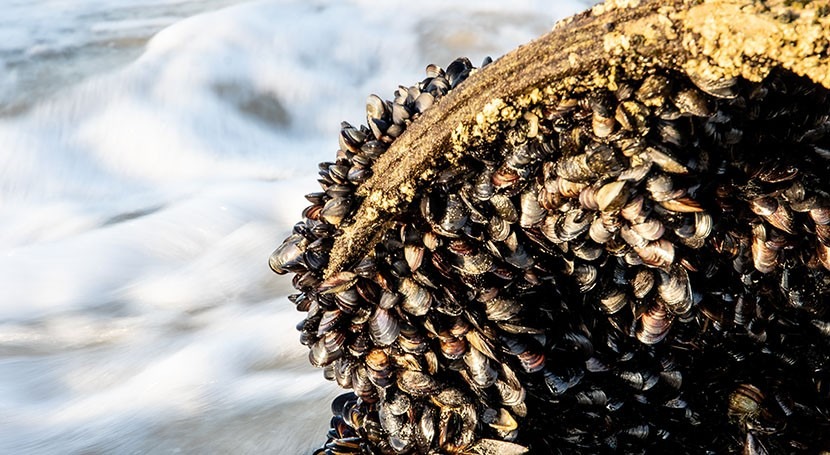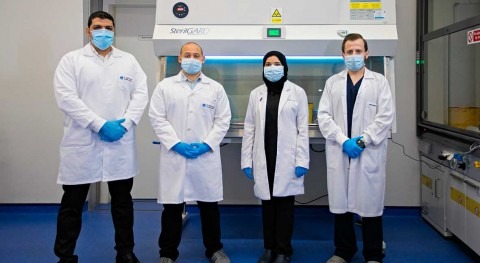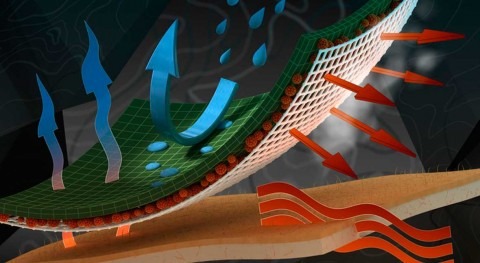A team of researchers from Khalifa University has developed a new material that can remove dyes from industrial wastewater. Inspired by mussels, the new material is made from a polymer called polydopamine, modified with an ionic liquid. This creates a new adsorbent material for the removal of anionic pollutants from water.
The team comprised Prof. Hassan Arafat, Professor of Chemical Engineering and Director of the Research and Innovation Center in Graphene and 2D Materials (RIC-2D), Rawan Abu Alwan, Research Associate, Botagoz Zhuman, Research Assistant, Dr. Mahendra Kumar, Research Scientist, and Prof. Enas Nashef, Professor of Chemical Engineering. They published their work in Chemical Engineering Journal.
Anionic pollutants carry a negative charge and are often found in industrial wastewaters from a variety of sources, including metal plating, mining, and textile dyeing.
“Surface and groundwater pollution caused by industrial dye-loaded wastewater effluents threatens human health and ecological systems, causing a serious environmental problem in many countries,” Prof. Arafat said. “Several treatment techniques have been applied to remove dyes from wastewater, and among these, adsorption is considered the most economically feasible and easily applied. However, traditional adsorbents offer low selectivity and the process can produce secondary waste products.”
For better dye removal from wastewater, a highly selective adsorbent is needed. Recent research attention has turned to nanomaterials as these have high removal capacities, fast kinetics, and high selectivity. However, nanomaterials also bring major limitations: They are expensive, not always reusable, and can be toxic themselves.
As a material with many functional groups, extraordinary self-adhesive properties, and biocompatibility, the potential applications for polydopamine-based materials are abundant
Instead, the KU research team turned to nature for inspiration.
Mussels are marine animals that attach themselves to a variety of surfaces using byssus threads, which are made from a protein containing dopamine. In humans and mammals, dopamine is a neurotransmitter that plays a role in reward-motivated behavior, but in mussels, it acts as a natural adhesive. Polydopamine is a synthetic polymer that mimics the structure of this dopamine-containing protein. It has the ability to coat a variety of surfaces and provides a versatile platform for surface modifications.
“As a material with many functional groups, extraordinary self-adhesive properties, and biocompatibility, the potential applications for polydopamine-based materials are abundant,” Prof. Arafat said. “However, its adsorption capacity is low compared to other conventional adsorbents.”
The polydopamine was modified with an ionic liquid to create a new adsorbent material. Ionic liquids have been gaining attention in recent years as potential alternatives to traditional solvents due to their low volatility, thermal stability, and ability to dissolve a wide range of compounds. They are also considered eco-friendly and sustainable thanks to their low volatility and ability to be recycled. The ionic liquid in this project was chosen based on its ability to form hydrogen bonds with the anionic pollutants, enhancing their affinity for the modified polydopamine.
Modifying the polydopamine with the ionic liquid allows for the creation of a material with enhanced adsorption properties for anionic pollutants: The polydopamine provides a versatile platform for surface modifications, while the ionic liquid provides the selectivity and affinity for the pollutants.
The team’s material is also reusable. Methanol was used to wash the material and desorb the dyes used in experimental testing. The team put the material through four cycles of adsorption-desorption without any significant performance deterioration or loss of structural integrity, proving its potential as an adsorbent material for use in industrial wastewater treatment applications.







